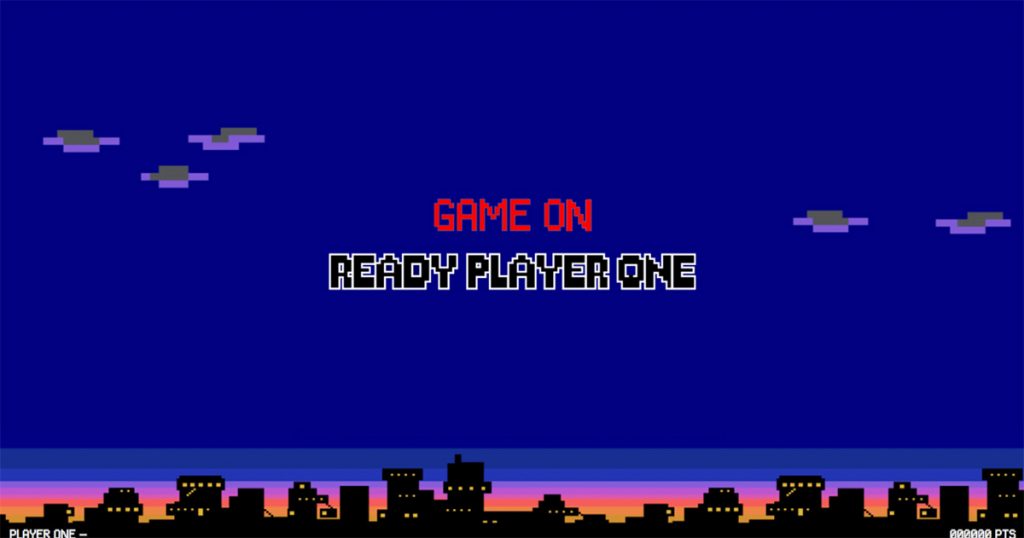101 sales email copywriting challenges – and how to overcome them
Sales email copywriting is never easy.
Sheesh, just landing in an inbox and getting an open can be a problem.
Next, you need to convince the prospect that this is a one-to-one sales email, rather than a load-in-a-list-and-fire-it-out mass mailer.
And, finally, you need to grab their interest and compel them to reply. Preferably positively, as in: ‘Yes, I’d love a quick chat – how would Wednesday at 3pm be for you?’
Sales email copywriting challenges
But how tough does it all get when you are trying to pitch something that is less than straightforward?
That’s what this post is all about.
OK, it’s time to be honest: I’m not going to look at 101 sales email copywriting challenges.
But, I will review the most common ones.
And I will give you strategies and tactics that can be deployed when you find yourself swimming against the tide.
Let’s wheel out the sort of scenarios we’ll cover.
- When you operate in a crowded market
- When, in all honesty, it’s nigh on impossible to distinguish your offering from others
- When your prospect already has another supplier or solution in place
- When there simply is not an immediate, pressing need for what you offer
- When there are multiple decision-makers involved in the buying process (and when isn’t there?)
- When you have to distill an extremely complex proposition into about 150 words
This list is far from exhaustive and could roll on into treble figures (101 to be exact).
But, it’s a start.
What makes for great sales email copywriting?
This one’s easy.
I’ve outlined the elements that great sales email copywriting must have in a previous post.
So, if you haven’t got the basics in place, head over there now and play catch-up.
And if you just can’t be bothered here are some ‘blink and you’ll miss them’ bullets.
- Be confident – avoid any apologetic tone
- Position yourself as ‘helping’ – rather than ‘selling’
- Keep it short – and keep it simple
- Write one-to-one – not one-to-many
- Write as a person in a rush – rather than a marketing grunt with spit-and-polish
- Lower barriers to entry – including commitment and time (after all, you only initially want a quick chat)
- Don’t do anything that distracts from your aim – to kickstart a conversation
- Hint at research – but don’t lay anything on too thick
- Don’t try too hard – keep it bright and breezy
Plain sailing so far?
Let’s bring on the problems.
Looking for help with your sales mail copywriting?
Sales email copywriting tips for
when your prospect already has a solution in place
It is incredibly rare to pitch something entirely new: most pitches are made to replace or upgrade something already in place.
Even Virgin territory already has a broadband provider in place.
Here’s what you need to do…
1. Address the situation head-on
If nothing else, acknowledging that there is already something in place cuts back on the replies informing you that this is the case.
‘I recognise that you may already have a supplier in place but…’
2. ‘But…’
If you can arrive at an understanding of why your prospect may be considering changing suppliers or upgrading/replacing their existing solution, then your proposition will write itself.
And this knowledge may not only alter how you write your sales mail but also the audience you decide to send it to.
Here are some things to consider:
- Has something externally changed (supplier gone bust/merged, legal change or availability of new features) that would create conditions that are right for changing?
- Do you specialise in or have an excellent track record in supporting a specific sector/department?
- Are there specific cost savings that are instrumental in swinging decisions at play?
- Will a reputation for innovation sway minds?
- Is customer service being regularly flagged as poor for existing suppliers/solutions?
Whatever it is, it is essential that you hone in on exactly how you can solve it.
3. Single-minded
Throwing everything – including the kitchen sink – at your pitch is not going to win you favours.
People are more likely to be persuaded by one strong, powerful, on-point reason to switch than a catalogue of reasons why your offering is superior.
Aim once and aim well.
Remember your goal with this sales mail is kickstart a conversation – and when you are chatting you can bring up all those other points.
4. Don’t be too hard on those polite declines
Those who consider what a polite decline means, rather than what it says, will realise that it represents a golden hello rather than a wave bye-bye.
A polite decline is actually all of these things:
- Recognition that your prospecting is perceived as coming from a person rather than being part of a sales mass mailer
- An indication that your mail has been opened, read and considered
- Confirmation that the recipient has the humanity to grace it with a reply rather than hit delete
The more that you consider it, a polite decline is, in many ways, an expression of interest.
- What’s more in rapidly replying to a polite decline you achieve what was initially your goal: you start a conversation
- By getting back quickly you also confirm how important your prospect’s response is to you
- And by directly addressing any points made in the note you received you show that you are responsive
The true beauty of a polite decline is that it is actually an invitation to be more expansive.
If your original prospecting mail was around 150 words – you can now spell out your proposition more carefully. You already have someone’s attention and you are replying to them, rather than cold mailing them.
Now we’re prospecting!
Looking for help with your sales mail copywriting?
Sales email copywriting tips for
selling into a crowded market
You may well be the dog’s bollocks – but there are plenty of other pairs of canine testes all around you.
While we all like to think we are vastly superior to the humdrum competition, we all know – in our hearts – that often we are only separated from most of our competitors by just a ‘wafer-thin’ margin.
Most points of differences are found among the ‘nice to haves’ rather than ‘got to haves’.
And ‘nice’ isn’t great territory for a sales pitch.
Prospecting is not marketing
The starting point here is to take off your marketing hat: prospecting is not marketing.
And marketing tactics are – generally speaking – ineffective when you are looking to generate a lead.
So – forget everything you thought you knew: a prospecting mindset must be very different from the traditional marketing mindset.
Let me explain.
Much of the marketing material that gets produced is aimed at an audience already pretty far down your funnel. A need has been established, a solution settled on and, now, it’s a matter of convincing someone to pick you to provide it.
If you venture earlier on in the sales funnel, marketers preferred go-to tactic is ‘content marketing’. This is used as a way to define your brand as commanding (or, at least, occupying) a certain space.
- The first type of marketing material goes into detail about benefits to close a sale.
- The second type explores the general terrain but does not really try too hard to sell.
Neither of these is fit for the purpose of prospecting.
- When you are prospecting you don’t have the luxury of time to establish your brand’s credentials: you must quickly establish a need
- Nor do you have an audience’s attention so you can win them over by finely wrought comparisons and case studies: you must quickly inspire action
So, here’s how your sales email copy can buy you space in a crowded market
1. Through force of personality
Never underestimate the power of simply sounding different or making someone smile.
When material differences are pretty much non-existent, you can use the tone of your sales mail copywriting to give yourself the edge.
Find out how competitors are prospecting and then make sure you stand out from them. All of them.
The possibilities here are endless but you can easily cut through a swathe of distant, business-speak pitches with a jokey, informal approach or you can stand out from faceless, corporate pitches with a heartfelt, personal piece of outreach.
2. Through experience
Having experience in a sector counts. And it can add up to interest.
Just dropping a comment on something a number customers from a certain sector tell you helps to enhance the impression that your solution is designed for this.
Or you could say that your *|SECTOR|* clients love the fact that your solution offers a, b or c.
Either way, you have just differentiated yourself through experience.
3. Through added value
This is a game-changer. You may not differ much on cost or on features but your after-sales and customer service can carve you breathing space.
This tactic is particularly useful where a poor track record in after-sales typifies the market you operate in. Here spelling out that you care and giving one or two examples of going beyond the expected levels of service can be extremely powerful, especially if your contact has been bitten before.
There are other ways to add value.
- Do you have strong CSR or environmental credentials? These can be a real boost when prospecting to certain sectors or types of organisation.
- Similarly, the difference between an outsourced service and a partnership may be a bang on a drum that resonates.
4. Through honesty
Quite simply you try this: be honest that there are a lot of pitches being made from a lot of similar companies at the moment but …
And now the trick is to find just one strong ‘but’ reason (see suggestions two and three above) or go for a humorous/whimsical close (see suggestion one above).
Sometimes honesty pays.
5. Through single-mindedness
When you are struggling to define yourself, the tendency is to outline every small difference that exists.
This is a bad idea.
It risks overlooking the main needs you meet and the more things you mention, the more you sound like a corporate brochure
A better tactic by far is to pick one thing and hang your email on this.
- You’ll need to have undertaken research to understand exactly what different sized companies, sectors, job roles, locations, etc. will be most receptive to
- You’ll need to carefully segment your mailing according to this
- You’ll need to watch carefully for responses and be prepared to reposition your mail if it’s not hitting that spot
Looking for help with your sales mail copywriting?
Sales email copywriting tips for
when you have to make a complex pitch
Some solutions just ain’t simple.
In sectors like tech, medical and electronic manufacturing, any innovation or service is likely to be meaningful to only a specialist audience. It is also likely to require a hell of a lot of technical terms to even describe it.
The question for prospectors is whether to try and blind your audience with science – and come over all learned – or try and dumb it down a little.
Well…
The best complex pitch is not complex at all.
It is made 100% in everyday language and, if there is no way that the problem and solution can be outlined in a sentence or two, then the pitch should avoid spelling it all out.
It should run something like this:
‘As |name of job title| at |name of company| I’m sure you’ve found |insert shorthand for problem| to be an issue. My team has recently discovered a way you can use |insert shorthand for solution| to fix this.
It’s all pretty complicated stuff but the long and short is it works and it’s really producing results for companies like |name of customers|.
I think it could really help out at |name of company| too. Can I put in a call to talk you through the technical ins and outs and share some examples of how I see you benefitting from it?’
The rule of thumb here is to pitch simply and rely on curiosity to do the rest.
Your brevity will be appreciated and will ultimately earn more trust than a string of arcane 13+ letter words ever could.
And do not link out to a more detailed explanation online, please.
You are not looking to drive traffic to a web page but to be invited for a chat.
Looking for help with your sales mail copywriting?
Sales email copywriting tips for
when that all-important immediate need is lacking
Prospecting when there is no immediate, pressing need is like trying to ride a donkey through your sales funnel with just a carrot to coax it on.
What you lack is the stick.
And, without the stick, sales emails tend to produce only inertia, apathy and disinterest.
Not a recipe for success!
What to do?
You still have a heap of sales targets to meet even if it’s ‘offseason’.
Here are a few ideas to help.
1. Watch those polite refusals
Let’s just imagine your prospecting mail is a salesperson.
Now picture that polite refusal as an ‘objection’. The best way to handle objections is to change your pitch so that it either counters these or forestalls them.
And, just as the best salespeople handle objections proactively, so should you learn from your polite refusals and rewrite your mail so that it already answers the main objections it may create.
2. Mention the elephant in the room
Being honest and upfront is usually the best policy.
That’s why coming out and saying, ‘I recognise that this may not be your top priority right now but…’ can really work.
Of course, you need something very strong after the ‘but…’, and probably this would also be something unexpected.
Over to you.
3. Call in the big boys
Social proof can add clout to a mail that would otherwise be passed over in an instant.
Mentioning that X, Y and Z have recently implemented this implicitly raises the question of ‘what they could see that your prospect could not?’
4. Reason not the need
If stoking up a need to burn red hot is not possible, then focus on the reward.
Forget telling prospects why they need something and start shouting from the rooftops about what this something has done.
Note that we said ‘has done’ not ‘can do’: use concrete examples of the rewards that have been gained by those who have deployed your solution.
And the sense of missing out or of obtaining becomes a reason (need) for opening the sales conversation.
Looking for help with your sales mail copywriting?
Sales email copywriting tips for
when you are pitching to multiple buyers
Most B2B prospecting pitches are no longer one seller to one buyer.
They are increasingly characterised by the buying decision being made across multiple departments, levels of seniority and often need to marry differing – sometimes contradictory – interests and needs.
Don’t panic: help is at hand.
1. Don’t cross-reference
Do not start mentioning that you have also contacted Gill from Finance.
Your sales email – remember – should be short and focussed. Its goal is simple: to be offered the space to strike up a conversation.
So, when you consider mentioning you have approached others you run the risk of:
- Making this seem like a complicated proposition
- Risking diverting the prospect’s resulting action from setting up a meet/phone call to chatting to colleagues
- Offering the out that someone else in the company will pick up this opportunity
- Falling prey to interpersonal or interdepartmental rivalries and squabbles before you’ve even firmly embedded your proposal
2. Don’t adopt a blanket approach
A blanket approach where you send the same mail to others risks blowing your person-to-person cover.
All of a sudden, your personal, considered approach becomes a spam mail probably sent to thousands.
And you lose all credibility.
Worse than this…
If your mail to the Finance department and Marketing department is a carbon copy it probably means you are not trying very hard to speak to the needs and problems of each individual.
And you lose all interest.
Game over!

Looking for help with your sales mail copywriting?

